I remember the Blue Ash/Montgomery/Symmes Township tornado on April 9, 1999. I was in Blue Ash that night, and it was the loudest thunderstorm I had ever heard in my life. My home was not hit, but nearby friends’ homes were. In the days after that tornado, I helped clear debris, collect belongings, and provided a shoulder to cry on if needed. The damage was intense, but localized; you can still see evidence from the tornado if you look carefully at the trees across the street from Sycamore High School. That tornado is a big reason why I am a meteorologist today.
Before returning to Cincinnati, I tracked numerous severe thunderstorms and tornadoes in the Ohio Valley. I had been in numerous Storm Prediction Center “moderate” or “high” risks before. While last winter was abnormally warm, it wasn’t unusually stormy. Rain would come and go, and there was little to no snow. At the time, I remember meteorologists in this area joking about how boring the weather pattern was.
On the Monday before Friday, March 2nd, 2012, I was working the morning shift, and I noted the risk for strong and severe storms on Friday. Before March 2nd, there were other severe weather threats to our south and west. With a slight risk of severe weather (as forecast by the Storm Prediction Center) in place, an EF4 tornado hit Harrisburg, Illinois in the middle of the night on February 4th. News of this violent tornado in late February was – frankly – bit surprising given NWS and SPC forecasts; it also had me on edge regarding the forecast for March 2nd. Where forecast models handling everything correctly? As the week went on, the threat for severe weather on Friday increased in the Ohio Valley, but I remember forecast models keeping a focus for severe weather centered over southwestern Indiana, western Kentucky, and Illinois…in areas that had been hit hard by storms earlier in the week.
On the February 29th, 2012, the Storm Prediction Center had the entire Tri-State in a slight risk for severe storms and mentioning a threat for tornadoes:
In the early morning hours of March 1, 2012, the Storm Prediction Center upgraded the Tri-State to a moderate risk and mentioned a threat for “long track” and “strong” tornadoes:
The Ohio Valley remained under a moderate risk until 7:58am eastern time on March 2. At 7:59am, parts of the Ohio Valley were placed in a rare Storm Prediction Center high risk, but the Tri-State was not included yet:
I remember setting my alarm for 7:45am on March 2nd just to see if the Storm Prediction Center would put us in a high risk. They didn’t at 7:59am, so I went back to bed for a couple of hours.
By 10:30am, I was back awake, and watched as the Storm Prediction Center put the Tri-State in a “high risk”, suggesting that long-track and potentially violent tornadoes were imminent:
I was into work shortly thereafter. Until about 1:00pm in the afternoon, it was a “waiting game.” No supercells had popped up in our area, but we knew the powerkeg was about to blow. High-resolution models suggested rotating storms and supercells were going to explode in the afternoon, but they disagreed on exactly where. Between and 1 and 2pm, Tim Hedrick and I watched as three different supercells blew up in southwestern Indiana over the span of two counties in less than 15 minutes. When Tim says, “I’ve never seen supercells go up on radar that quick near here. Ever.” you believe him. In 20 minutes, Dubois and Perry County Indiana went from having just cumulus clouds to tornadoes.
A lot of the suspense about what was going to happen and where was resolved by 2:30pm in the afternoon; supercells in southern Indiana were producing damage, and there were numerous indications from spotters that the damage was extensive and the tornadoes were strong or violent. As a meteorologist, I knew there was a chance for this to happen, but until it had been confirmed, the magnitude of this event didn’t really hit me.
Between 2:30 and 3:30pm, we were just waiting for the worst. My tweets from to 2:30pm to 3:45pm became more and more urgent:
There were reports of tornadoes with the two supercells rolling up I-71, but the focus had to be turned to Ripley County suddenly as a supercell in Jennings County, Indiana pushed east. This cell would produce a EF-3 tornado and kill two in Holton:
Thankfully, the storm that produced a tornado in Ripley County would quickly die, but this event was just beginning for northern Kentucky and southwestern Ohio. While reports of tornadoes and funnel clouds came in from Carroll, Gallatin, and Owen County, the rotation in the northernmost supercell tightened quickly. The first, second, and only Tornado Emergencies ever issued by the National Weather Service in Wilmington were issued for this cell. Looking back at our severe weather coverage, I noticed my hand and the warning printout I was holding were shaking as I announced the first Tornado Emergency on the air. A family friend of mine several weeks later called me out on my hand shaking. She told me that was her first indication from me that this was going to be bad event.
By the time the storm was in southern Boone and Campbell County, damage was already being done; some of the debris from the violent EF-4 tornado in Piner/Crittenden could be seen on the FAA Doppler radar in southern Kenton County just before 4:30pm:
At first, the debris ball (shown at the end of the hook echo in the left side of the above image) wasn’t apparent. Data were only available from the FAA radar every 6 minutes on March 2, 2012, so word of the debris ball first came from the National Weather Service in Wilmington (who could see the radar data every minute). This debris ball on radar was the second sign to me (once storms were in the viewing area) that this would likely be a deadly and historic event. In the over 20 years I’ve lived in Cincinnati, I had never heard of or seen a debris ball on a local radar.
A second debris ball showed up on the FAA Doppler radar in southern Campbell County as the northernmost supercell hit Peach Grove, Kentucky:
This storm went on to hit Moscow and Hamersville, Ohio, producing EF-3 damage and killing 3. Initially, this report of damage in Moscow was delayed; I remember it was at least 20 minutes between Moscow was hit and when we first heard about the damage.
After the tornado had caused damage in Moscow, fatigue began to become a factor. We had been on the air for more than two hours and reports of damage were coming in every couple of minutes. There was no time to be tired, though. 4 more tornadoes would occur after the damage in Moscow, including an EF-1 in Seaman, Ohio and two tornadoes near West Union. The rotation from each supercell in Adams County could easily be seen from NWS Wilmington’s radar just before 5:30pm:
By sunset, 9 tornadoes had raked across the Tri-State, and 3 of them were major tornadoes (given a EF-3 or greater rating):
Originally, the Piner/Crittenden tornado was given an EF-3 rating; on the Friday after the outbreak, the National Weather Service upgraded the tornado to an EF-4. The Piner/Crittenden was only the 11th tornado in the Tri-State since 1950 to be classified as a violent tornado:
16 Tornado Warnings and 5 Severe Thunderstorm Warnings were issued for the Tri-State on March 2nd, 2012. While this is a large number of warnings in our area on one day, it is a small fraction of the number of Tornado and Severe Thunderstorm Warnings issued in the entire country on March 1-2, 2012:
After looking through the data, there are three things that stand out to me about the tornado outbreak of March 2, 2012. For the first time ever, the National Weather Service issued a Tornado Emergency for our area (not once, but twice). A Tornado Emergency is issued when a large, confirmed tornado threatens a highly populated area. Second, three major tornadoes were confirmed in the event. The last time 3 major tornadoes were confirmed in our area on the same day before March 2, 2012 was on April 3, 1974. Lastly, March 2, 2012 now stands as the deadliest severe weather day in the Tri-State since official NWS records began in 1950.
There is no doubt that this was the biggest event of my career so far and likely will be for the rest of my life. I still get emotional thinking about March 2, 2012. As a meteorologist, you do all you can do to get the word out about severe weather in the days and hours leading up to the event; when anyone dies on your watch, you take it personally and you wonder if you could have done more. I hope that something like what happened on March 2, 2012 in this area never happens again; unfortunately, events like these have happened and will happen again in time.

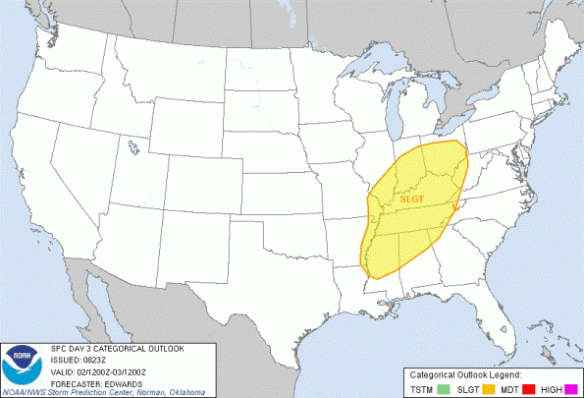
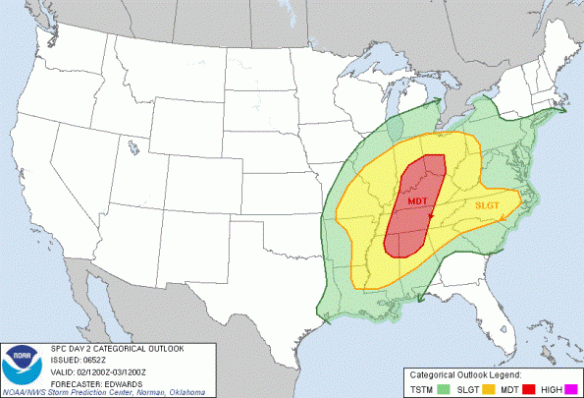
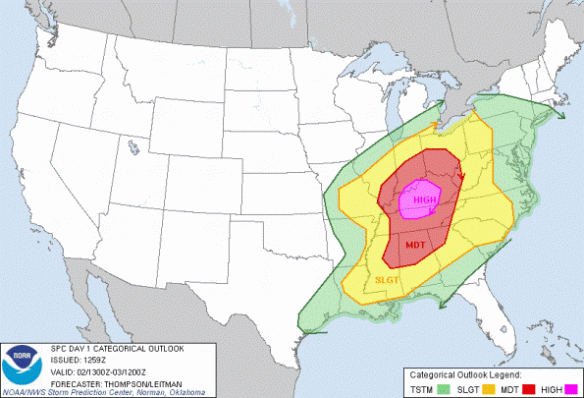
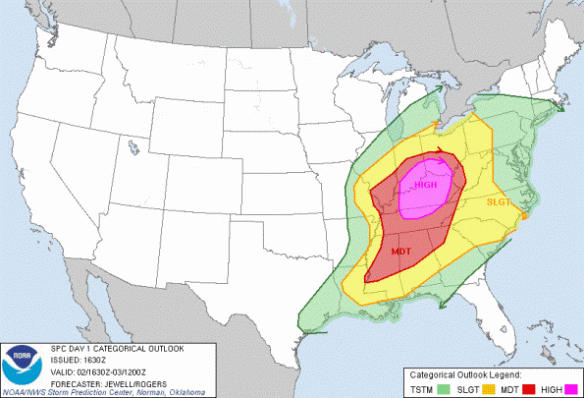
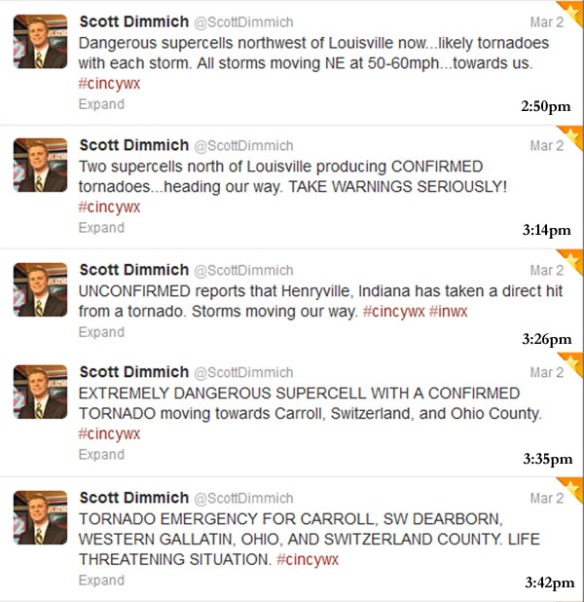
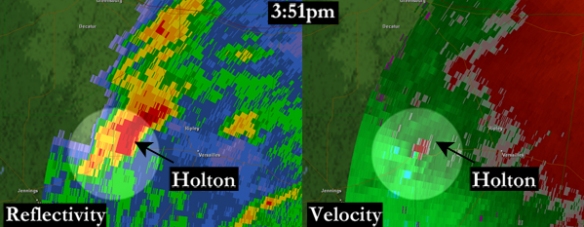
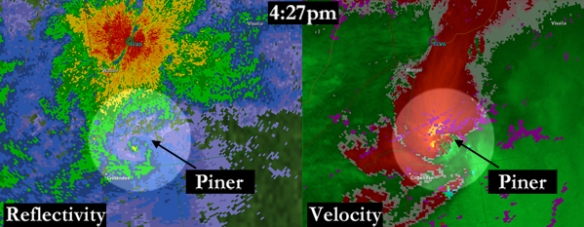
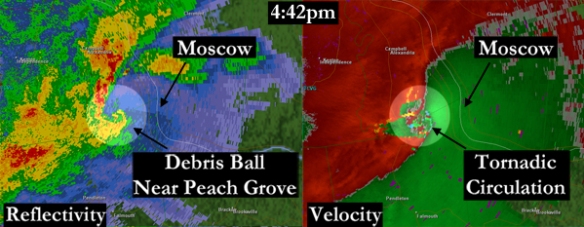
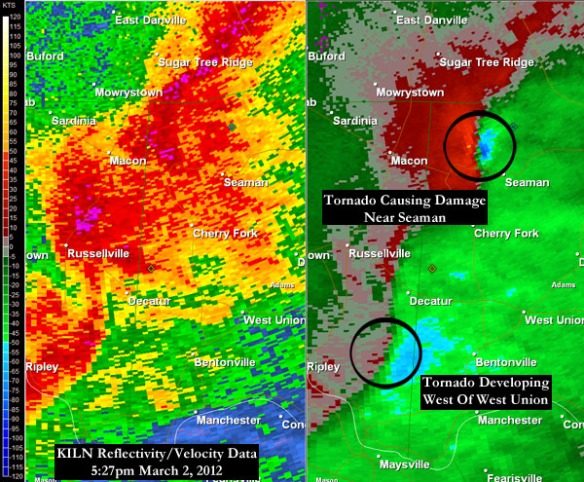
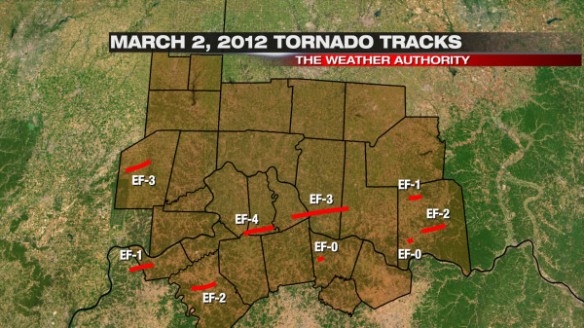
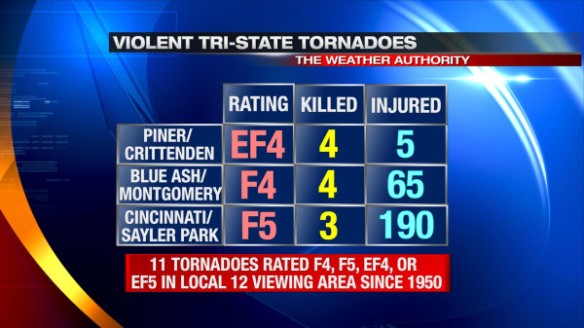
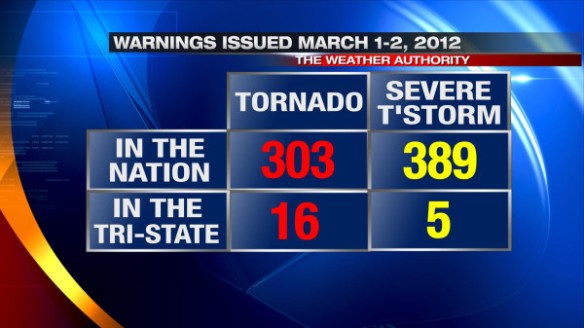
I live in Peach Grove and was home during the tornado. Our family farm received a lot of destruction, as well as damage to mine and 4 other family member’s houses. I was just curious if there is any way to see a re-play of the radar during the outbreak. Weather is facinating to me, and as much as I should have been scared when it was happening, strangely enough I was excited!! I would have loved to have been taking pictures of the entire thing. Obviously, power went out, and wasn’t restored until Tuesday so we didn’t get to see much. And, most of the news afterwards and even today usually doesn’t even mention Peach Grove.
I think you all handled the coverage extremely well. Thank you! Like you, I hope something like that doesn’t happen again.